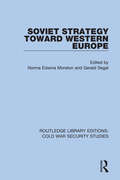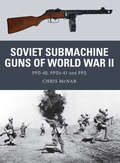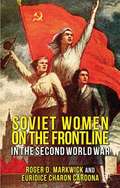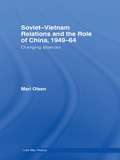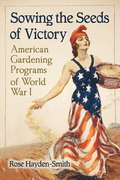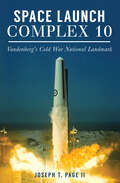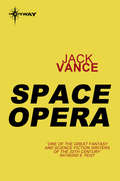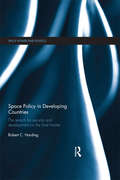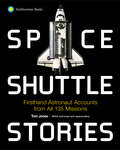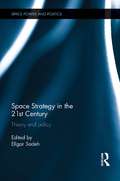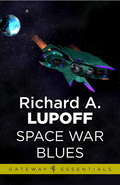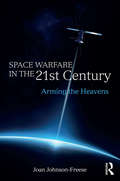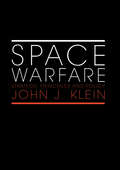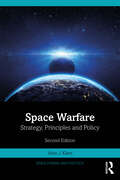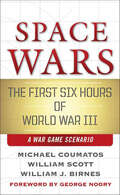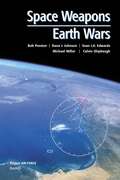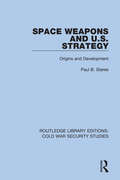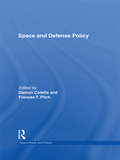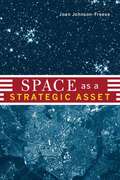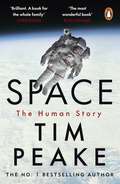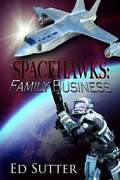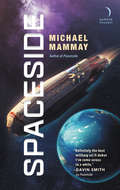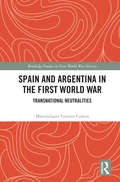- Table View
- List View
Soviet Strategy Toward Western Europe (Routledge Library Editions: Cold War Security Studies #55)
by Edwina Moreton; Gerald SegalThis book, first published in 1984, carefully examine the political debate surrounding nuclear weapons and superpower polices in Cold War Western Europe. It seeks to analyse a distinctly European view in Soviet policy, as opposed to a superpower view. It examines Soviet domestic and foreign policy, economic and military practice, with the aim of understanding and countering the Soviet threat to Western Europe.
Soviet Submachine Guns of World War II
by Chris Mcnab Steve NoonThe Russian PPD-40, PPSh-41, and PPS family of SMGs were a key part of Soviet infantry assault doctrine in World War II and beyond. Featuring expert analysis and an array of specially commissioned full-color artwork, this engaging study explains the history, use and development of Soviet wartime SMGs in detail. It gives particular focus to the tactical applications of these weapons in combat, and how they compared to firearms wielded by their German opponents. With numerous first-hand combat accounts, and detailed technical explanations, this book is ideal for both the general reader and the firearms enthusiast.The submachine gun (SMG) came to be the embodiment of the Soviet fighting spirit during World War II. From 1943 the Red Army's preference for close-quarters combat resulted in entire infantry units being equipped with nothing but SMGs. By deploying multiple SMG-armed companies and battalions, the Red Army was able to develop ferocious firepower in urban warfare and position assaults, the soldiers keeping within the SMG's effective range of about 150m to nullify the German skills in armoured and manoeuvre warfare, artillery support and aerial bombardment.Three particular designs dominated the war. First came the PPD-40, a weapon initially designed in the 1930s but rationalized for more efficient production in 1940. This 7.62mm firearm, with a cyclic rate of 800rpm, was in production until 1941, when it was replaced by the defining Soviet SMG of the war - the PPSh-41. Here was a weapon perfectly suited to wartime conditions. It was rugged, cheap to produce, simple to operate and delivered devastating close-quarters firepower. The story of the Soviet wartime SMG is completed by the PPS, designed for even cheaper and faster production, first put into small-scale production inside the besieged city of Leningrad in 1942. This remarkable weapon never replaced the PPSh-41, however, possibly as much because of political as production considerations. Both the PPSh-41 and PPS went on to post-war service with various communist states, seeing combat in the Korean War, the Indochina and Vietnam Wars and various colonial insurgencies in Africa and Asia.
Soviet Women on the Frontline in the Second World War
by Roger D. Markwick Euridice Charon CardonaThis is the first comprehensive study in English of Soviet women who fought against the genocidal, misogynist, Nazi enemy on the Eastern Front during the Second World War. Drawing on a vast array of original archival, memoir, and published sources, this book captures the everyday experiences of Soviet women fighting, living and dying on the front.
Soviet-Vietnam Relations and the Role of China 1949-64: Changing Alliances (Cold War History #Vol. 10)
by Mari OlsenThis new book analyzes how the Soviet leadership evaluated developments in Soviet-Vietnamese relations in the years from 1949 to 1964. Focusing on how Soviet leaders actually perceived China’s role in Vietnam relative to the Soviet role, it shows how these perceptions influenced the Soviet-Vietnamese relationship. It also explains how and when Moscow’s enthusiasm for the active Chinese role in Vietnam came to an end – or, in other words, from what point was Beijing’s involvement in Vietnam perceived as a liability rather than an asset, in the strategies of Soviet policy makers. This book is an excellent resource for all students with an interest in Soviet-Vietnamese relations and of strategic studies and international relations in general.
Sowing the Seeds of Victory: American Gardening Programs of World War I
by Rose Hayden-SmithSometimes, to move forward, we must look back. Gardening activity during American involvement in World War I (1917-1919) is vital to understanding current work in agriculture and food systems. The origins of the American Victory Gardens of World War II lie in the Liberty Garden program during World War I. This book examines the National War Garden Commission, the United States School Garden Army, and the Woman's Land Army (which some women used to press for suffrage). <P><P> The urgency of wartime mobilization enabled proponents to promote food production as a vital national security issue. The connection between the nation's food readiness and national security resonated within the U.S., struggling to unite urban and rural interests, grappling with the challenges presented by millions of immigrants, and considering the country's global role. The same message--that food production is vital to national security--can resonate today. These World War I programs resulted in a national gardening ethos that transformed the American food system.
Space Launch Complex 10: Vandenberg's Cold War National Landmark (Landmarks)
by Joseph T Page IIInside the historic Cold War landmark at Vandenberg Space Force base—its technology, its people, and its military importance. Includes photos. Situated in the sand dunes of California&’s Central Coast, Space Launch Complex Ten, often called SLC-10 or &“Slick Ten,&” is a National Historic Landmark that commemorates a powerful Cold War legacy. Home to Vandenberg&’s Space and Missile Technology Center, or SAMTEC, the facility contains the rich technological heritage of the U.S. Air Force&’s space and missile launch systems. As the only remaining Thor intermediate-range ballistic missile launch site in the world, SLC-10&’s noteworthy achievements span the globe. The complex trained British Royal Air Force missileers for Project EMILY, assisted during nuclear atmospheric tests in the Pacific, and launched military weather satellites in support of the covert National Reconnaissance Program. Former air force space and missile officer Joseph T. Page II recounts amazing stories of dedicated men and women who led the American military effort to explore space.
Space Opera
by Jack VanceA space opera is what science fiction readers call an adventure in outer space and on alien planets. But a space opera could also be an opera, a musical work, that originated in outer space...Jack Vance's unique novel SPACE OPERA fits both definitions marvelously! Because it starts with the mysterious opera company from the equally mysterious planet Rlaru that arrives on Earth to astonish and infuriate music-lovers - and then disappears without trace!And when Roger Wool's wealthy aunt determined to reciprocate by bringing an Earthly operatic team into space and to the unknown world Rlaru, there unwinds a complex and surprising space opera of the first kind ...filled with enigmatic aliens, weird worlds, and all the special color and cunning that is the hallmark of the best Jack Vance.
Space Policy in Developing Countries: The Search for Security and Development on the Final Frontier (Space Power and Politics)
by Robert C. HardingThis book analyses the rationale and history of space programs in countries of the developing world. Space was at one time the sole domain of the wealthiest developed countries. However, the last couple of decades of the twentieth century and the first decade of the twenty-first century have witnessed the number of countries with state-supported space programs blossom. Today, no less than twenty-five developing states, including the rapidly emerging economic powers of Brazil (seventh-largest), China (second-largest), and India (fourth-largest), possess active national space programs with already proven independent launch capability or concrete plans to achieve it soon. This work places these programs within the context of international relations theory and foreign policy analysis. The author categorizes each space program into tiers of development based not only on the level of technology utilised, but on how each fits within the country’s overall national security and/or development policies. The text also places these programs into an historical context, which enables the author to demonstrate the logical thread of continuity in the political rationale for space capabilities generally. This book will be of much interest to students of space power and politics, development studies, strategic studies and international relations in general.
Space Shuttle Launch System 1972-2004
by Ian Palmer Mark LardasThe Space Shuttle is one of the oldest and most famous manned launch systems - the only launch vehicle that has been used for a longer period of time is the Soviet (now Russian) R-7 booster. By the start of the third millennium, the Space Shuttle had carried crews into space over 85 times. Although not a military structure, the Shuttle had been sold as an all-purpose launch system to be used jointly for military and civilian purposes. Featuring full-colour photos throughout, this book covers the design, development and operational history of a unique vehicle.
Space Shuttle Stories: Firsthand Astronaut Accounts from all 135 Missions
by Tom JonesExperience all 135 NASA space shuttle missions ever flown through the words of the astronauts themselves in this spectacularly illustrated volumeWith more than 600 photos from the NASA archives, this guide is perfect for fans of space history and spaceflightNASA's space shuttle was the world's first reusable spacecraft, accomplishing many firsts and inspiring generations across its 30-year lifespan as America's iconic spaceship. In Space Shuttle Stories, shuttle astronaut Tom Jones interviewed more than 130 fellow astronauts for personal vignettes from each mission, complemented by their written accounts for all 135 space shuttle missions, from Columbia's maiden flight in 1981 to the final launch of Atlantis in 2011. The book is a major contribution to the historical record of a momentous era of spaceflight.Each mission profile includes:An astronaut narrative that immerses the readers in their personal mission experienceData about the mission, crew, launch, landing, duration, and highlightsCaptivating photographs rarely seen by the publicThe Space Shuttle program&’s 6 orbiter vehicles (Enterprise, Columbia, Challenger, Discovery, Atlantis, and Endeavour) carried a total of 355 astronauts into orbit on 135 missions aimed at cutting-edge scientific research, satellite launch, retrieval and repair, collaborative work with the Russian Mir station, the launching and servicing of the Hubble Space Telescope, and the construction of the International Space Station. Space Shuttle Stories focuses on the lived, human experiences of larger-than-life space missions. It's a definitive oral history that captures the importance, wonder, and exhilaration of the Space Shuttle era.
Space Strategy in the 21st Century: Theory and Policy (Space Power and Politics)
by Eligar SadehThis book offers an overview of space strategy in the 21st century. The purpose of space strategy is to coordinate, integrate, and prioritize space activities across security, commercial, and civil sectors. Without strategy, space activities continue to provide value, but it becomes difficult to identify and execute long-term programs and projects and to optimize the use of space for security, economic, civil, and environmental ends. Strategy is essential for all these ends since dependence on, and use of, space is accelerating globally and space is integrated in the fabric of activities across all sectors and uses. This volume identifies a number of areas of concern pertinent to the development of national space strategy, including: intellectual foundations; political challenges; international cooperation and space governance; space assurance and political, organizational, and management aspects specific to security space strategy. The contributing authors expand their focus beyond that of the United States, and explore and analyse the international developments and implications of national space strategies of Russia, China, Europe, Japan, India, Israel, and Brazil. This book will be of much interest to students of space power and politics, strategic studies, foreign policy and International Relations in general.
Space War Blues (Gateway Essentials #500)
by Richard A. LupoffNew Alabama. A planet that's a fair reproduction of long-lost Dixie, filled with down-home, racist rednecks. The N'Alabamians have carried their tribal prejudices to the farthest reached of the galaxy, like the other minorities expelled from the Earth by the dominant Pan-Semitic Alliance. There's New Transvaal. New Cathay. And New Haiti, a black world where Papa Doc's descendants carry on the old ways.When New Alabama and New Haiti go to war with each other, it's a bloody black-versus-white stalemate. Until the N'Haitians develop a horrific new secret weapon based on a very ancient tradition.Imagine you're a clean-cut N'Alabamian good ol' boy, giving your all up there in the space fleet, and you suddenly realise the enemy crews aren't human at all. They're what people back on Earth used to call Zombies...
Space Warfare in the 21st Century: Arming the Heavens (Cass Military Studies)
by Joan Johnson-FreeseThis book examines the recent shift in US space policy and the forces that continually draw the US back into a space-technology security dilemma. The dual-use nature of the vast majority of space technology, meaning of value to both civilian and military communities and being unable to differentiate offensive from defensive intent of military hardware, makes space an area particularly ripe for a security dilemma. In contrast to previous administrations, the Obama Administration has pursued a less militaristic space policy, instead employing a strategic restraint approach that stressed multilateral diplomacy to space challenges. The latter required international solutions and the United States, subsequently, even voiced support for an International Code of Conduct for Space. That policy held until the Chinese anti-satellite (ASAT) test in 2013, which demonstrated expanded Chinese capabilities. This volume explores the issues arising from evolving space capabilities across the world and the security challenges this poses. It subsequently discusses the complexity of the space environment and argues that all tools of national power must be used, with some degree of balance, toward addressing space challenges and achieving space goals. This book will be of much interest to students of space policy, defence studies, foreign policy, security studies and IR.
Space Warfare: Strategy, Principles and Policy (Space Power and Politics)
by John J. KleinThis new study considers military space strategy within the context of the land and naval strategies of the past. Explaining why and how strategists note the similarities of space operations to those of the air and naval forces, this book shows why many such strategies unintentionally lead to overemphasizing the importance of space-based offensive weaponry and technology. Counter to most U.S. Air Force doctrines, the book argues that space-based weapons don’t imbue superiority. It examines why both air and naval strategic frameworks actually fail to adequately capture the scope of real-world issues regarding current space operations. Yet by expanding a naval strategic framework to include maritime activities—which includes the interaction of land and sea—the breadth of issues and concerns regarding space activities and operations can be fully encompassed. Commander John Klein, United States Navy, uses Sir Julian Corbett’s maritime strategy as a strategic springboard, while observing the salient lessons of other strategists—including Sun Tzu, Clausewitz, Jomini, and Mao Tse-tung—to show how a space strategy and associated principles of space warfare can be derived to predict concerns, develop ideas, and suggest policy not currently recognized. This book will be of great interest to all students and scholars of military and strategic studies and to those with an interest in space strategy in particular.
Space Warfare: Strategy, Principles and Policy (Space Power and Politics)
by John J. KleinThis book examines military space strategy within the context of the land and naval strategies of the past. This second edition has been updated and revised, with several new chapters included.The book examines competition and conflict in the space domain, including the methods used and sound counterstrategies to thwart a competitor’s efforts. Contrary to many spacepower pundits, the book explains that neither is the space domain inherently offense-dominant nor is there a first-mover advantage when incorporating a sound space strategy. Offering new insights into the nature of strategic competition in space, this second edition leans heavily on the British maritime experience and the work of Julian Corbett to provide a strategic framework for understanding competition, crisis, and conflict in the space domain. It also includes important concepts from leading theorists and strategists, both past and present, to amplify concepts and provide additional insights into the functioning of space strategy. The book provides a foundational framework by underscoring that space strategy is shaped by the fundamental nature of all warfare, along with the universal principles of strategy and the essential unity of all strategic experience. Warfare is warfare, no matter the domain of operations, and consequently, policymakers and military leaders can look to historical experience and knowledge of past strategic frameworks to help gain insights into the functioning of space warfare.This book will appeal to students of spacepower, defense and strategic studies, and International Relations.
Space Wars: The First Six Hours of World War III, a War Game Scenario
by William J. Birnes William Scott Michael CoumatosMichael J. Coumatos is a former U.S. Navy test pilot, ship's captain, and commodore; U.S. Space Command director of wargaming; and a government counterterrorism advisor. William Scott is a retired bureau chief of Aviation Week and Space Technology and a nine-year Air force veteran who served as aircrew on nuclear sampling missions. He is a six-time Royal Aeronautical Society "Journalist of the Year" finalist, and won the Society's 1998 Lockheed Martin Award for the "Best Defense Submission." He also received both the 2006 and 2007 Messier-Dowty awards for "Best Airshow Submission." With the help of New York Times bestselling author William J. Birnes, these renowned experts have joined forces to grippingly depict how the first hours of World War III might play out in the year 2010.Coumatos, Scott, and Birnes take the reader inside U.S. Strategic Command, where top military commanders, space-company executives, and U.S. intelligence experts are conducting a DEADSATS II wargame, exploring how the loss of critical satellites could lead to nuclear war. The players don't know that the war they are gaming has already begun, miles above them in the lifeless, silent cold of space. Jam-packed with the actual systems and secret technologies the United States has or will soon field to protect its space assets, Space Wars describes a near-future nuclear nightmare that terrorists will relish but politicians prefer to ignore. In a quieter, more peaceful time, Space Wars would be an exciting work of fiction. But with the United States now at war, Space Wars is all too real. .At the Publisher's request, this title is being sold without Digital Rights Management Software (DRM) applied.
Space Weapons Earth Wars
by Dana J. Johnson Michael D. Miller Robert Preston Sean J. Edwards Calvin ShipbaughThis overview aims to inform the public discussion of space-based weapons by examining their characteristics, potential attributes, limitations, legality, and utility. The authors do not argue for or against space weapons, nor do they estimate the potential costs and performance of specific programs, but instead sort through the realities and myths surrounding space weapons in order to ensure that debates and discussions are based on fact.
Space Weapons and U.S. Strategy: Origins and Development (Routledge Library Editions: Cold War Security Studies #58)
by Paul B. StaresThis book, first published in 1985, analyses the factors that have shaped the militarization of space. By examining in great detail the determinants of U.S. policy, it explains why for over 25 years space did not become the scene of an arms race, and why this began to change in the late 1970s. Both superpowers did, however, develop a limited anti-satellite capability in the 1960s, and these programmes are also discussed.
Space and Defense Policy (Space Power and Politics)
by Damon Coletta Frances T. PilchThis edited volume introduces the reader to the role of space in military and defense strategy, and outlines some of the major foreign and domestic actors in the space arena, as well as constraints of law and treaties on activities in space. It also addresses science and technology as they relate to space policy. The book addresses three main questions: How does the realm of space fit into strategic thinking about national security? How does policy regarding space develop and what considerations, both in the United States and abroad, figure prominently in calculations about space policy? How do different states/nations/actors regard the role of space in their national security calculations and how do these policies impact each other? This book fills a niche in the space policy field, providing insights into space and strategy from international experts from the military, academic and scientific communities. A unique feature of the book is the chapter on science and technology, which utilizes the latest information available concerning space utilization and exploration.
Space as a Strategic Asset
by Joan Johnson-FreeseJoan Johnson-Freese argues that the race for space weapons and the U.S. quest for exclusive or at least dominant ownership of strategic space assets have alienated the very allies that the United States needs in order to maintain its leading role in space exploration. Taking a balanced look at the issues that have contributed to the decline of America's manned space program, such as lack of political support and funding, Johnson-Freese offers not only a critique but also a plan for enhancing U.S. space security through cooperation rather than competition.She begins with a brief overview of the history of international space development through four eras: before Sputnik, the space race, after Apollo, and globalization. Then she focuses on how policy changes of the mid-1990s have changed the nation, examining why the United States has grown obsessed with the development of space technology not just as a tool for globalization but as a route toward expanding an already dominant arsenal of weapons. Johnson-Freese claims that these policy choices have greatly affected the attitudes and actions of other countries, and in the fight to achieve security, the United States has instead put itself at greater peril.Johnson-Freese explains complex technical issues in clear, accessible terms and suggests a way forward that is comprehensive rather than partisan. America is not the only country with space ambitions, but it is unique in viewing space as a battlefield and the technological advancements of other nations as a dire threat. Urgent and persuasive, Space as a Strategic Asset underscores the danger of allowing our space program to languish and the crucial role of cooperation in protecting the security of our country and the world.
Space: A thrilling human history by Britain's beloved astronaut Tim Peake
by Tim PeakeFrom bestselling author and British astronaut Tim Peake, an inspirational human history of space travel, from the Apollo missions to our future forays to Mars. The Right Stuff for a new generation.'This book is brilliant - once in a blue moon. A book for the whole family.' Chris Evans, Virgin Radio'The most wonderful book ... Tim Peake is a historian and encyclopaedia of space.’ Rory Stewart'An extraordinary book. For anyone - even if you’re not interested in Space. If you’re interested in human stories and the human character - this is delightful.' BBC Breakfast'A fascinating, detailed, playful book drawn from extensive research – Peake met seven Apollo astronauts, Russian cosmonauts and various other space technicians – as well as his considerable personal experience. Lifts the lid on what space is like: the dedication and sacrifice; the politics and pantomime; the practicalities and the peril; the glory and fame; the adjustment back to normal life.' iPaper'A thrilling human history of space' Daily Mirror'The bible of space travel' Chris Moyles, Radio XAs seen in the major TV series Secrets of Our Universe with Tim Peake.Only 656 people in human history have left Earth. In Space: The Human Story, astronaut Tim Peake traces the lives of these remarkable men and women who have forged the way, from Yuri Gagarin to Neil Armstrong, from Valentina Tereshkova to Peggy Whitson.Full of exclusive new stories, and astonishing detail only an astronaut would know, the book conveys what space exploration is really like: the wondrous view of Earth, the surreal weightlessness, the extraordinary danger, the surprising humdrum, the unexpected humour, the newfound perspective, the years of training, the psychological pressures, the gruelling physical toll, the thrill of launch and the trepidation of re-entry. The book also examines the surprising, shocking and often poignant stories of astronauts back on Earth, whose lives are forever changed as they readjust to terra firma.Publication of the book comes on the eve of NASA's plans to return to the moon, fifty years after an astronaut last walked on the lunar surface. In 2024 the Artemis II mission will send four astronauts to orbit the moon. In 2025 Artemis III will send the first woman and the first person of colour to step on the lunar surface. What will separate these upcoming moonwalkers from the legendary Apollo crews? Does it still take a daring-do attitude, super-human fitness, intelligence, plus the 'Right-stuff' - a fabled grace under pressure? And how will astronauts travel even further - to Mars and beyond? Space: The Human Story reveals all.
Spacehawks: Family Business
by Ed SutterWhen a luxury spaceliner is hijacked in the Bishti sector, sets in motion are a series of events that could well lead to interstellar war. A Senator from the Confederation, along with his wife, are among the passengers taken hostage. Jason Hawke, former Confederation Marine, is awakened from an alcoholic cycle of self-destruction and spurred to go to the rescue of the woman he once loved, Kristin Baird, the wife of the Senator. Meanwhile, agencies within the Confederation and the Confed Navy are making plans to go to the rescue of the hostages, little knowing that the rival DeSotoan Empire is laying an ambush for them, using the hostages as bait. But when Jason is joined by his three brothers and a beautiful fighter pilot, the hostage takers may find out that they've bitten off much more than they can chew. After all, violence is the Hawke clan's family business!
Spaceside (Planetside #2)
by Michael MammayFrom the author of Planetside, a Best Book of 2018 (Library Journal) A military legend is caught in the web between alien intrigue and human subterfuge…Following his mission on Cappa, Colonel Carl Butler returns to a mixed reception. To some he is a do-or-die war hero. To the other half of the galaxy he’s a pariah. Forced into retirement, he has resettled on Talca Four where he’s now Deputy VP of Corporate Security, protecting a high-tech military company on the corporate battlefield—at least, that’s what the job description says. Really, he’s just there to impress clients and investors. It’s all relatively low risk—until he’s entrusted with new orders. A breach of a competitor’s computer network has Butler’s superiors feeling every bit as vulnerable. They need Butler to find who did it, how, and why no one’s taken credit for the ingenious attack.As accustomed as Butler is to the reality of wargames—virtual and otherwise—this one screams something louder than a simple hack. Because no sooner does he start digging when his first contact is murdered, the death somehow kept secret from the media. As a prime suspect, he can’t shake the sensation he’s being watched…or finally succumbing to the stress of his past. Paranoid delusion or dangerous reality, Butler might be onto something much deeper than anyone imagined. But that’s where Butler thrives.If he hasn’t signed his own death warrant.
Spain and Argentina in the First World War: Transnational Neutralities (Routledge Studies in First World War History)
by Maximiliano Fuentes CoderaThis is the first book that analyzes the transnational impact of the Great War simultaneously on two countries, Spain and Argentina, that remained neutral throughout the conflict. Both countries were very relevant in the conception of propaganda and policies of belligerent countries such as France, Germany and Great Britain and showed that the conflict had a global influence and affected deeply local political and cultural processes, even in areas geographically distant from the trenches. Within this framework, this book is focused on three aspects that are analyzed dynamically throughout the whole war from a transnational perspective: neutrality as a space of dispute between pro-Allies and pro-German sectors and its relation with local politics, the debate about what positions should be assumed in order to guarantee a world without war, and the polemics on the ideas of nations and supra-nations (Hispanism, Latinism, Pan-Americanism). The conclusions of the book highlight that the radicalization that exploded in 1917 in both countries was fundamental in shaping the political radicalization of the last months of the conflict and the postwar period. As happened in Europe, the Great War did not finish in 1918 and its traces continued in the 1920s and 1930s.
Spain and the American Revolution: New Approaches and Perspectives
by Gabriel Paquette Gonzalo M. Quintero SaraviaThough the participation of France in the American Revolution is well established in the historiography, the role of Spain, France’s ally, is relatively understudied and underappreciated. Spain's involvement in the conflict formed part of a global struggle between empires and directly influenced the outcome of the clash between Britain and its North American colonists. Following the establishment of American independence, the Spanish empire became one of the nascent republic's most significant neighbors and, often illicitly, trading partners. Bringing together essays from a range of well-regarded historians, this volume contributes significantly to the international history of the Age of Atlantic Revolutions.
